HISTORIC NORMANDY – FROM THE BAYEUX TAPESTRY, CHÂTEAUX, MEDIEVAL TOWNS & A RICH CUISINE
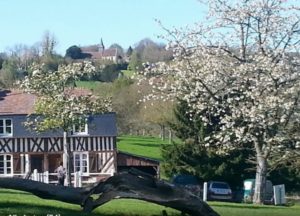
Normandy offers a rich feast of contrasts for the visitor, ranging from fashionable beach resorts, stunning scenery that inspired the Impressionists and the dramatic coast of the D-Day Landings, which we’ve touched on in the last couple of blogs. There’s a whole lot more to explore though, from historic artefacts, medieval fairs and ruined abbeys, to châteaux, cheeses, cider, conquerors and the childhood home of one of the greatest couturiers of the 20th century.
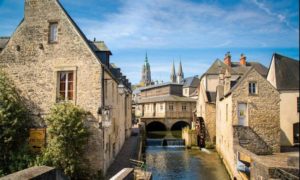
If you’ve explored the beaches of the D-Day Landings and are keen to see what else Normandy has to offer in that general region, you are spoiled for choice. A good place to start would perhaps be the obvious one, namely, Bayeux. The medieval town itself is lovely, with its Gothic cathedral and old, narrow streets, although it must be said the main reason most visitors go there is of course the Tapestry. Fortunately spared during WW2, the historic centre is superbly intact.
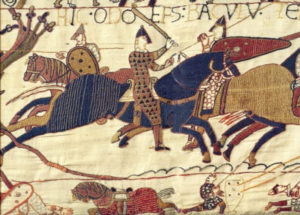
The famous tapestry is housed in the Guillaume-le-Conquérant centre (an obvious name, you might say!). The French assert that the 70m long x 50cm high embroidered work was made by Queen Mathilde and her ladies-in-waiting, but modern scholars have concluded that it was probably commissioned by William’s half-brother, Bishop Odo, who became Earl of Kent, that the Latin text contains hints of Anglo-Saxon, and that the vegetable dyes used are more commonly found in England.
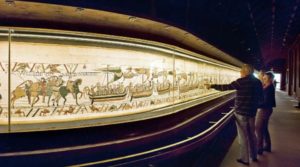
Whatever its actual history, the tapestry is an extraordinary narrative document. As the tapestry is presented in a darkened space, it’s a good idea to grab one of the very good audio-guide commentaries to take around with you. There’s also an exhibition which presents the secrets of the tapestry’s creation and historical context and a 16 min. film to enrich your visit. Bayeux is also home to the Battle of Normandy Memorial Museum, which offers a complete overview of this momentous event from 07 June to 29 August 1944.

Other than visiting the Memorial de Caen, if you didn’t spend time in Caen itself before heading to the Normandy Landings beaches, it’s a logical destination after visiting Bayeux and its tapestry. It’s the historic city of the dukes of Normandy, and in spite of the bombardments of June 1944, the City of Art and History has preserved its beautiful architectural heritage.
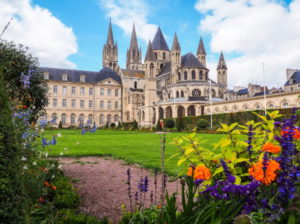
The Abbaye-aux-Hommes founded by William the Conqueror, whose Église Saint-Etienne is a wonderful example of Romanesque architecture, the Abbaye-aux-Dames founded by Queen Mathilde, and the Église Saint-Pierre. Most prominent though, since it’s right in the middle of town, is the Château de Caen, the fortress built by William in 1060 when he was Duke of Normandy, now home to the Musée des Beaux-Arts, and the Musée de Normandie, housed in the Governor’s lodge within the castle walls. The fortress, which was used as a barracks during WW2, was bombed in 1944 and seriously damaged, yet is still very impressive.
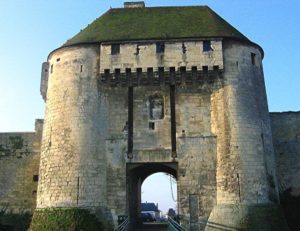
During recent restoration work within the grounds, the cellar of a 15th century private house was revealed which still had its firehouse, a powder magazine and two walls of an earlier forge dating from the early 14th century, as well as traces of a stables. As a bonus to your visit, there’s a great view of Caen from the top of the ramparts.
The town is a joy to wander and explore, with great little shops, numerous restaurants and narrow, cobbled streets with such names as rue aux Fromages—keep an eye out for the carved timber sculpture of the head of a so-called Green Man on a wall at no. 11, thought to be a medieval symbol of re-birth and renewal.
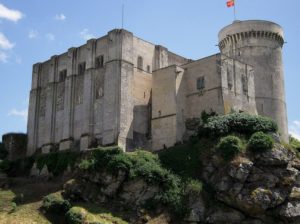
Given its association with William the Conqueror, after Caen it makes sense to head for Falaise, which is barely 36 kms to the south. From whichever side you approach the town, the large, square stone donjon (keep) of the Château de Falaise perched on its high, rocky outcrop dominates the market town. As it was the capital of the Duchy of Normandy at the time, Falaise was the birthplace of William the Conqueror in 1027, although most of the château you see today is the work of his youngest son, Henry I. The Normans would be forever known for their castle-building, and as was the case here, the choice of site enabled the Dukes to both control and protect the population.
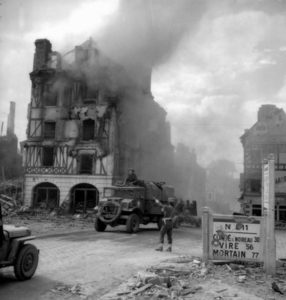
Its strategic importance meant that the town suffered during two important battles, the Battle of Falaise in 1204 and in August 1944, during the battle for the “Falaise pocket” as it became known, especially since it straddled the road to Caen. Although much of the town was damaged, the château however was too well built to sustain anything other than relatively minor damage, and has been listed as a Monument Historique since 1840.
Although the château is the main attraction, the town itself is very pleasant and vibrant place that merits a most enjoyable walk-about and includes some notable sights.
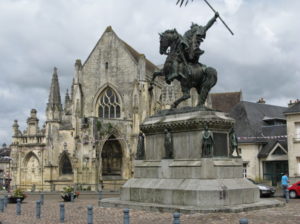
Starting in the main square, the Place Guillaume-le-Conquérant, which has a large statue of him on a horse, you’ll see the 13th century Église Sainte Trinité de Falaise to one side, and from here you can explore along the streets to the north, passing many attractive houses, and through the Place Belle Croix to the Place Dr Paul German, where you’ll see the Église Saint-Gervais.
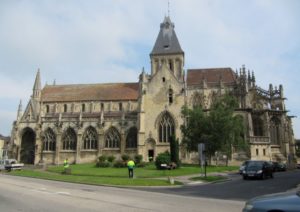
Further along is the Porte des Cordeliers, which is part of the extensive fortifications that still surround the town. As discussed in the previous Blog, the ‘Memorial des Civils dans la Guerre’ is also well worth visiting.
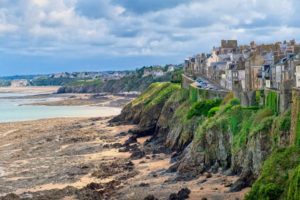
Either from Caen or Falaise, heading west across to the coast, as well as Mont St-Michel, there is Granville. This lively seaside fishing port facing the Channel Islands, commands stunning views of the Baie du Mont Saint-Michel from its fortified headland, although the Mont itself remains just out of sight. English troops built the earliest fortifications here during the Hundred Years’ War, then when the French took it back, Granville went on to produce many admirals and corsairs (officially sanctioned privateers, little more than pirates). During the German occupation, numerous concrete bunkers were built along the headland.
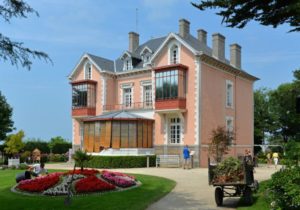
In the upper town, there are many fine Normandy mansions, shops, galleries and restaurants, however, for many, the main attraction is the Musée Christian Dior. This pretty pink villa, on the clifftop of the town, is where the great master lived as a child. It’s now a delightful museum, and the only “Musée de France” dedicated to a couturier. His parents bought this grand house, called Villa des Rhumbs, with its winter garden set in a park, in 1905, and he was born here the same year.
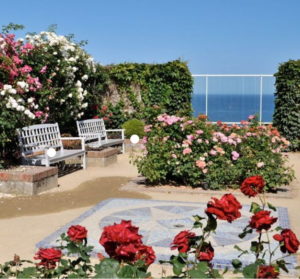
The property had to be sold when his father lost almost everything in the financial crisis of 1932. The villa was purchased by the town of Granville and the beautiful garden was open to the public from 1938. It became the Musée Christian Dior in 1997.
The garden is famous for its roses, established by Dior’s mother Madeleine, and was his favourite flower. “Rose” not only refers to the flower but the colour, which is the colour of the house and an inspiration for the designer throughout his career.
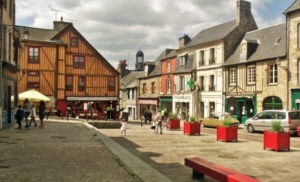
Heading back in an easterly direction, a delightful stopping off point is the medieval town of Domfront en Poiraie. Designated as a Small City of Character as well as One of the Most Beautiful Detours in France, it’s situated in a beautiful natural setting surrounded by woods, and built on a sandstone outcrop overlooking a gorge.
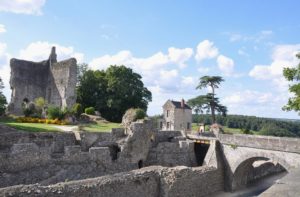
Its strategic position meant that its château was one of the strongest in France and had one of the most secure dungeons in the country. Today, the château is an evocative 11th century ruin, but you can visit it as well as the ramparts, towers and courtyards. The town, with its cobbled streets, has a number of half-timbered houses, while the church of Notre Dame-sur-l’Eau, located on the edge of a ford of the river, is a rare example of Norman Romanesque. Also check out the church of Saint-Julien, constructed in the early 20th century of reinforced concrete in the neo-Byzantine style. Its interior is well worth seeing.
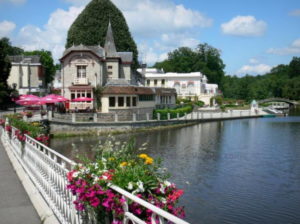
About 16kms east of Domfront is one of the loveliest towns in Normandy, Bagnoles-de-l’Orne, which lies in a lush green setting in the heart of the Andaines Forest. This pretty spa town is famous for its thermal baths and treatments for vascular and rheumatology problems.
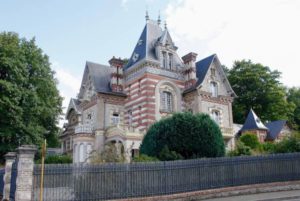
More important though for the visitor is that the town is famous for its beautiful Belle Epoque and Art Deco buildings, notably the casino, hotels and villas dotted around the lake.
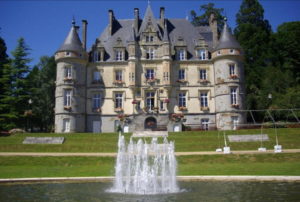
Château Goupil, now the Hotel de Ville, has a lovely park with an arboretum that has over 150 tree species. Bagnoles-de-l’Orne hosts a number of festivals throughout the year such as the Belle Epoque Festival in June, the Clés de Bagnoles music festival in July and August, and the Automne Gourmand food festival every September.
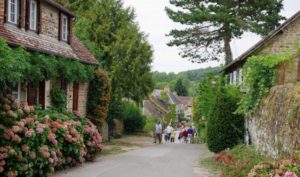
Normandy is blessed with six villages listed as Les Plus Beaux Villages de France, and about 40km S.E. of Bagnoles-de-l’Orne lies one of them, the picture-postcard village of Saint-Céneri-le-Gérei, in the heart of the Mancelles Alps. With its stone bridge spanning the river and its pretty stone houses, the village was much loved by artists such as Corot and Courbet and other pre-Impressionist landscape painters for its peace and serenity.
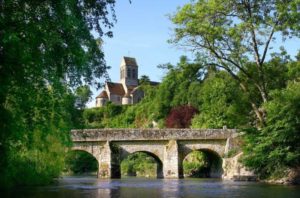
Time appears to have stood still at Saint-Céneri-le-Gérei. The village has an 11th century Romanesque church with a clock tower, and along the river is an impossibly picturesque medieval chapel surrounded by a lush meadow perched above the river Sarthe, that meanders peacefully by. There’s also a so-called miraculous fountain to discover, where fresh water sprang up to quench the thirst of a visiting 7th century Saint Céneri and his disciples. Legend had it that this water had the ability to cure eye problems. The 19th century Auberge des Soeurs Moisy was a place where poets, musicians and artists liked to come and rest as well as to paint. The inn’s most original feature is its Salle des Décapités, decorated with an intriguing array of black heads drawn in profile. The inn is now an art museum.
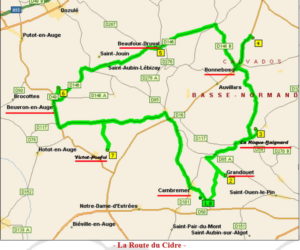
As well as so many towns of great historical interest and numerous picturesque villages, Normandy is renowned for two gastronomic specialities: apples for cider and Calvados and of course, cheese. La Route du Cidre, is a unique, well-marked route circular covering 40 kms., with the aim of introducing visitors to Calvados brandy, pommeau (a blend of Calvados and apple juice) and apple cider.
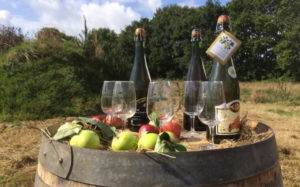
The story goes that Basque sailors introduced Norman mariners to cider around the 6th century AD, and although it took a few centuries for cider-making to gain traction in Normandy, by the 17th century, cider had overtaken every other alcoholic beverage in Normandy, until beer took over in the 20th century.
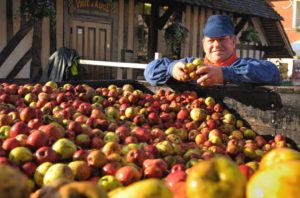
To this day, farmers use traditional methods to cultivate apple trees in clay soil and sedimentary rock. There are many different varieties of apples, some are bitter, some tart while others are sweet and acidic—cider apples aren’t suitable for eating—and bear beautiful names such as le domaine, le tranquille, le rouge-mulot, or la petite sorte.
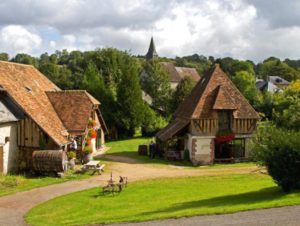
To the east of Caen, the Cider Route criss-crossses the Pays d’Auge down picturesque country lanes connecting the villages of Beuvron-en-Auge, Cambremer, Bonnebosq and Beaufour-Druval, and a number of others. Along the way, you have the choice of stopping off at over 20 cider farms! Distilleries and cider farms are indicated by the sign ‘Cru de Cambremer’.
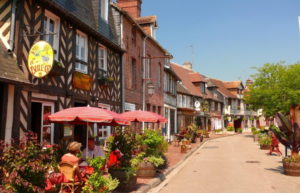
The Pays d’Auge area of Normandy is dotted with historic villages and buildings, and the beautiful village of Beuvron-en-Auge in particular—designated as one of the Plus Beaux Villages de France—is packed with gems.

There are lovingly restored 17th and 18th century half-timbered houses, an ancient covered market, the impressive 16th century Vieux Manoir and the 18th century Auberge de la Boule d’Or, a classic former inn. In and around the village there are craft workshops and places selling local produce. Antiques lovers will love this village, and wandering around the specialist shops located in the centre is a special treat.
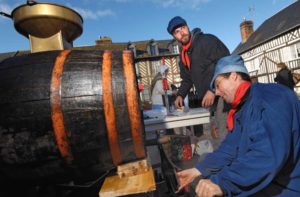
Every autumn the village celebrates the Beuvron-en-Auge Cider Festival, where you can watch apple-pressing take place on the village square and taste a whole variety of different ciders. Is it any wonder that the great British artist David Hockney has chosen to live and work here.
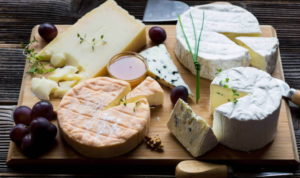
No discussion about Normandy would be complete without mentioning one of the most outstanding products from that region, namely, cheese, and top of the list would surely be camembert.

Camembert itself is an enchanting village, with half-timbered farms hugging lush, green slopes, dotted with contented cows and apple orchards that are impossibly picturesque whether covered or not in blossom. Developed by a farmer’s wife, Marie Harel, in 1791, who spent her last years in the nearby Beaumoncel Manor, camembert was awarded the much-coveted Protected Denomination of Origin (DOC) quality label in 1983.
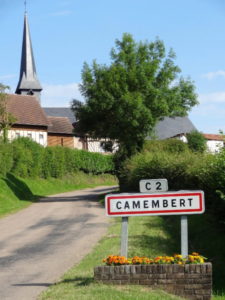
Visit La Maison du Camembert in the village where you will learn the history and secrets of this very special cheese, then enjoy a tasting inside the circular, cream-coloured building next-door, which resembles a round of camembert. You can also visit the Fromagerie Durant at la Ferme de la Héronnière, which is the last camembert producer actually located on the edge of the village.
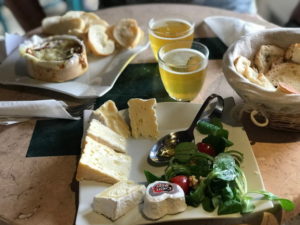
It’s no great surprise to discover that, like the Route du Cidre, there is a Route du Fromage in Normandy. Starting with Camembert, there’s also a walking track called the Pays du Camembert, which takes you to the village and around the surrounding countryside. The local Tourist Bureau has route maps for those interested in walking the 18 km route. From Camembert, the Route heads to the E. Graindorge cheese dairy.
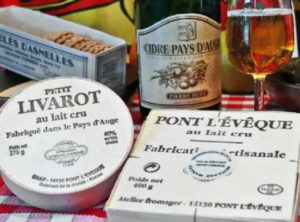
This is the showcase for the local Livarot cheese, often referred to as ‘The Colonel’ in France due to the coloured raffia trim on its packaging. The cheese dairy also shows how the Livarot and the nearby Pont l’Eveque cheeses are made.

The town of Pont l’Eveque itself is worth a visit with lots of half-timbered houses, and a setting right in the heart of the Pays d’Auge, known for the beauty of its landscape and pretty valleys.
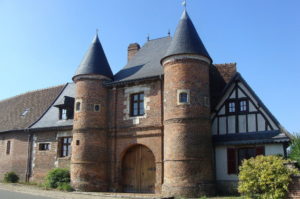
The last stop on the Route du Fromage is Neufchâtel-en-Bray, about 125 kms N.E. of Pont l’Eveque. Of Gallo-Roman origin, it has been an important town since the 9th century, especially due to its location on the border between the kingdom of England and the kingdom of France. It officially became part of France at the end of the Hundred Years’ War, and again experienced turbulent times during the Wars of Religion in the 16th century, and yet again during WW2 when it sustained serious damage. Despite a considerable amount of post-war rebuilding in the 1950s, it still has an important architectural heritage to admire, and of course, there’s the famous heart-shaped cheese to indulge in!
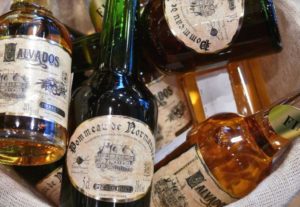
There are so many more fascinating drawcards to Normandy for the visitor to explore, and I’ll look at some more of them soon.
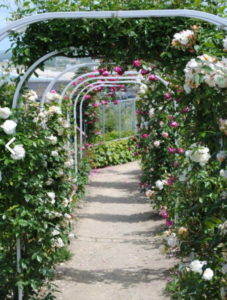


I can hardly wait for the world to open up again & visit this region
Hi Lois,
Lovely to hear from you, and yes, won’t it be terrific to be able to explore the world again–hopefully one day soon! Normandy has so much to offer, that even if you’ve seen the “headlines” there’s so much more to discover. Ahhhh, one day soon??
Cheers, Cheryl
Another lovely post full of delights and helpful practical information. Thank you Cheryl. best Sarah
You’re very welcome Sarah, and so glad you enjoy reading them. A few moments of armchair travel lets us escape for a brief while, and Normandy is such a rewarding area to explore. We won’t know ourselves when we’re allowed “out”! Best regards, Cheryl